Enjoy this humble and effortless Chinese seaweed egg drop soup – light, comforting, full of umami, and ready in minutes.
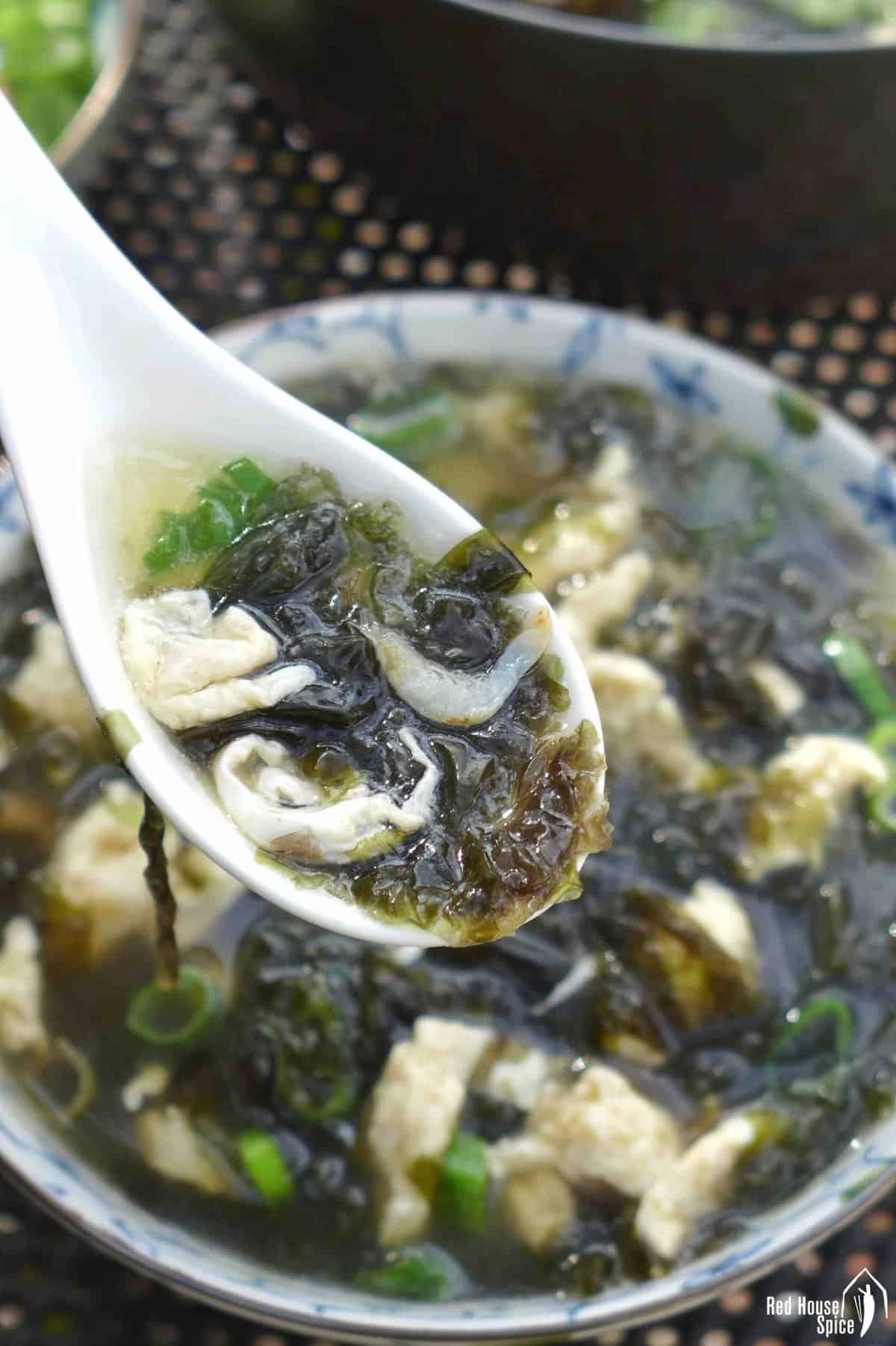
Jump to:
About the dish
Do you crave a bowl of soothing soup from time to time? I know I often do! One of my go-to favorites is Seaweed Egg Drop Soup—a dish that often comes to mind when I want something quick, nourishing, and full of umami flavor.
At its heart, this soup is a variation of Classic Chinese Egg Drop Soup, with an added taste of the sea from dried laver (seaweed) and papery dried shrimp (I’ll explain more about these ingredients later). Despite being seasoned with just a few simple condiments, it’s surprisingly tasty!
Much like Tomato and Egg Stir-Fry, often called the “National Dish of China”, this soup is one of those humble, homely dishes that many Chinese people learn to cook from a young age. If you’re curious about what authentic Chinese home cooking tastes like, I highly recommend giving this recipe a try.
Why this recipe
- Simple ingredients – just a handful of pantry staples
- Quick to make – ready in just a few minutes
- Light, cozy, and flavorful – perfect for any time of day
Ingredients
Here is a short list of ingredients you need for this soup:
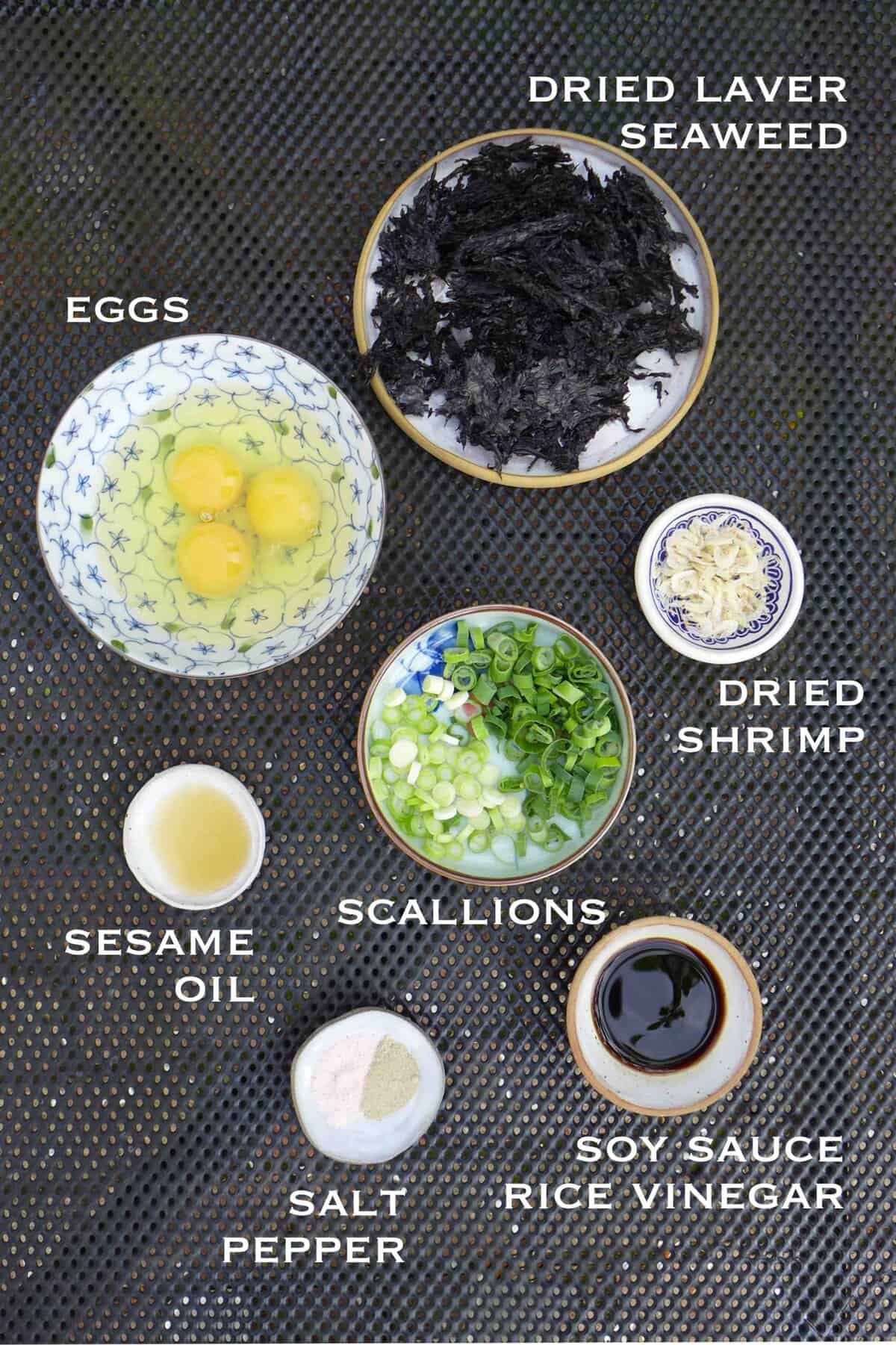
- Dried laver seaweed (learn more below)
- Eggs
- Papery dried shrimp (learn more below)
- Scallions
- Light soy sauce
- Black rice vinegar
- Sesame oil
- White pepper
About dried laver seaweed

Dried laver is the star ingredient of this dish. Known as Zǐ Cài/紫菜 (which literally means “purple vegetable”), it’s a type of seaweed commonly used in Chinese cuisine, especially in salads and soups. It’s the same variety as Japanese nori (used for sushi), but it often comes in a looser, more natural form. It softens quickly in water and adds a delicate, savory, ocean-like umami flavor.
In Chinese/Asian shops, Zǐ Cài is usually sold as a round, compact disk wrapped in plastic. It’s almost black in color with a hint of purple, and it turns a dark green hue once cooked.
Don’t confuse it with kelp (Hǎi Dài/海带), which is another type of seaweed with a much thicker, chewier texture.
About papery dried shrimp
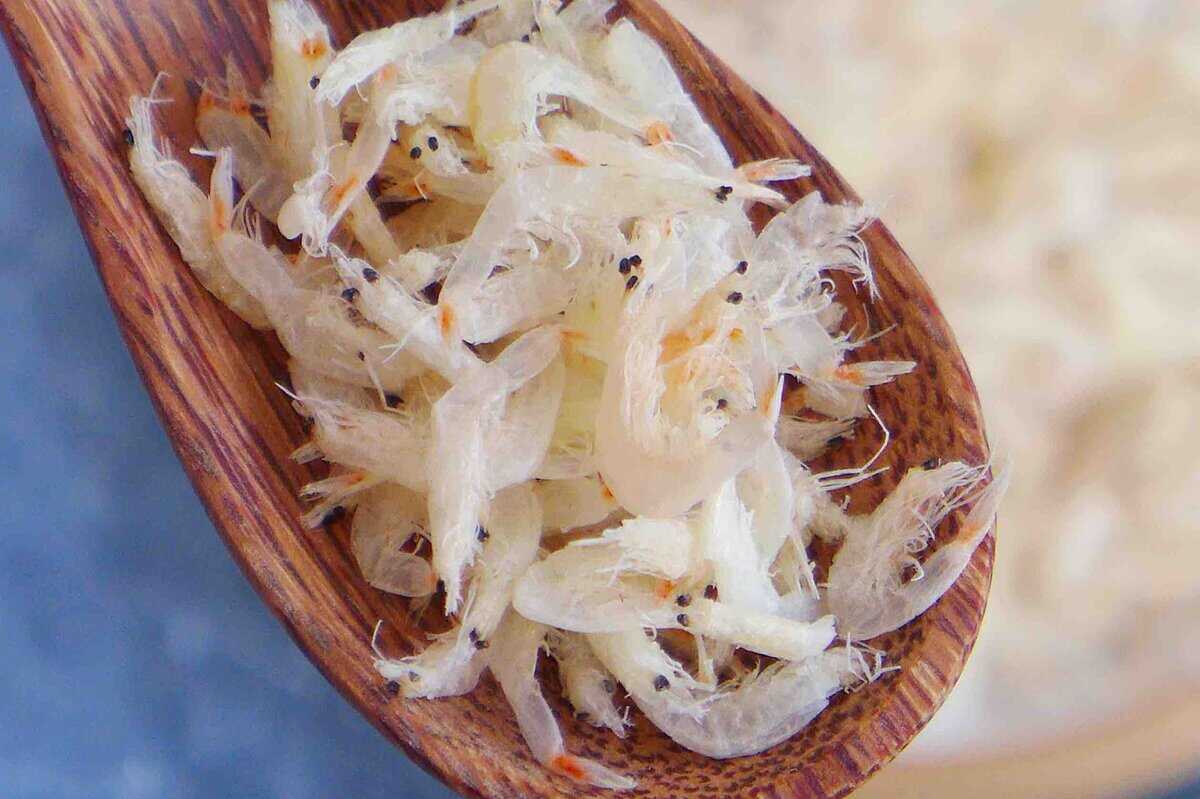
Papery dried shrimp are tiny, very lightweight shrimp that have been sun-dried until crisp and delicate. They add a subtle seafood aroma and a savory depth to soups, dumpling filling, and stir-fries. You can use regular dried shrimp as a substitute for this recipe (see adaptation tips in the cooking instructions below).
Cooking procedure
Step 1: Infuse the oil
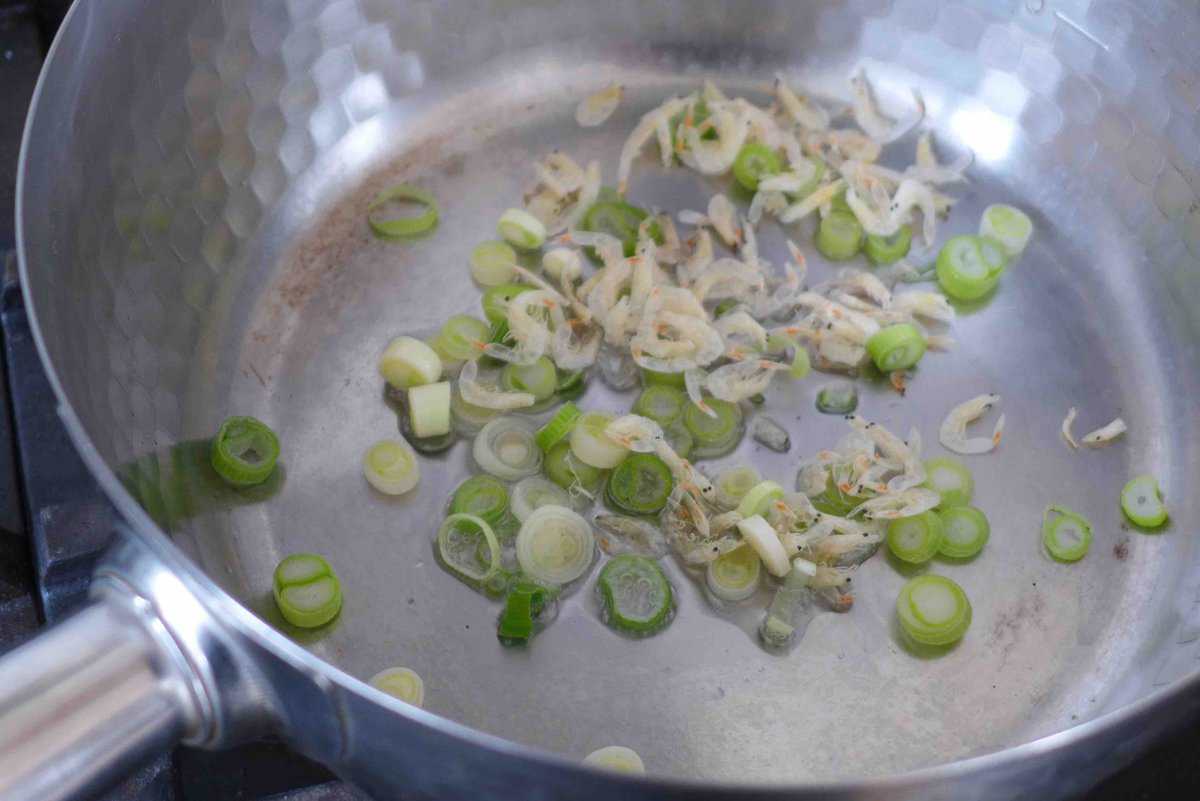
Add a splash of oil to a large saucepan or a wok, then place it over medium heat. Once the oil is warm, add the papery dried shrimp along with the light color parts of the scallions. Let them sizzle gently, stirring now and then, until they become fragrant and lightly golden (be careful not to burn then though).
🌟 NOTE: If using regular dried shrimp, remember to soak them to soften, then chop them finely to help release their flavor and mimic the lighter texture.
Step 2: Cook the eggs
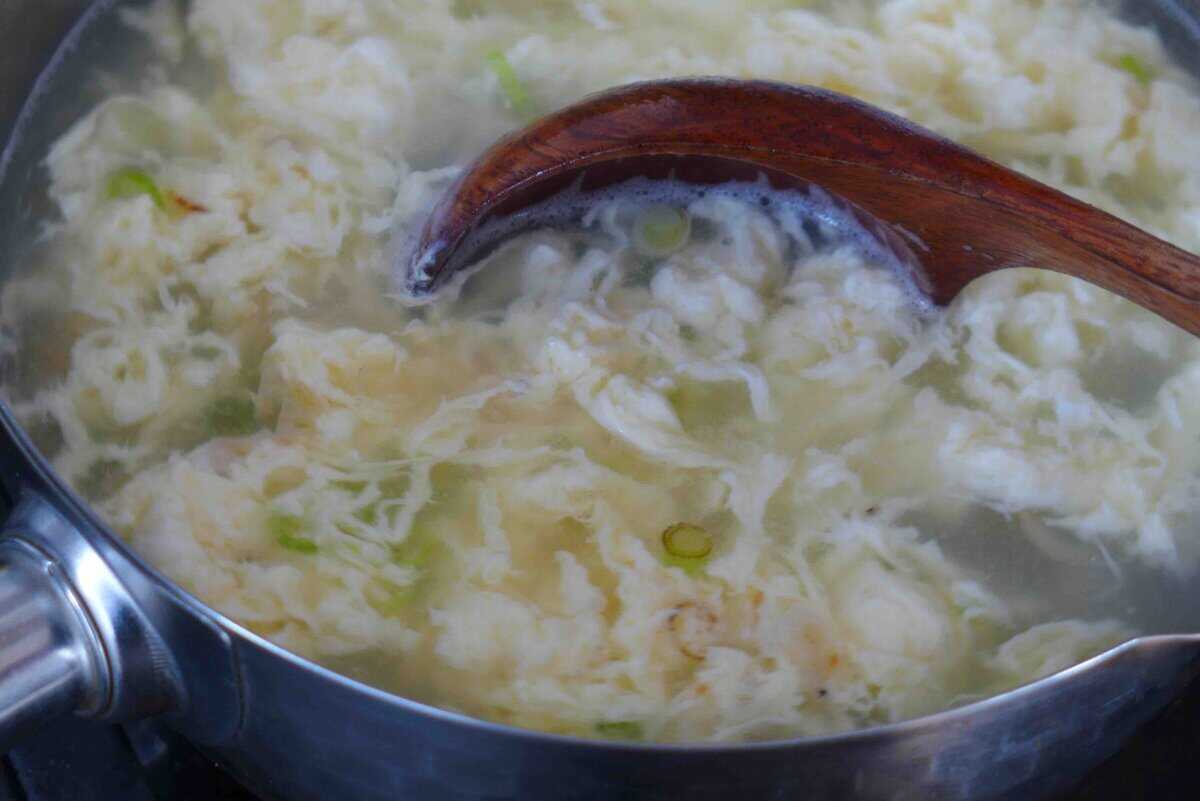
Pour in water, gently as it may splatter slightly. Bring the water to a boil. Once the water is bubbling, start pouring in the lightly beaten eggs.
With one hand, slowly drizzle it into the saucepan in a thin, steady stream. At the same time, use your other hand to stir the soup gently in one direction—this helps create those beautiful egg strands.
🌟 NOTE: To enhance the flavor even more, use unsalted chicken or vegetable stock instead of water.
Step 3: Add the seaweed
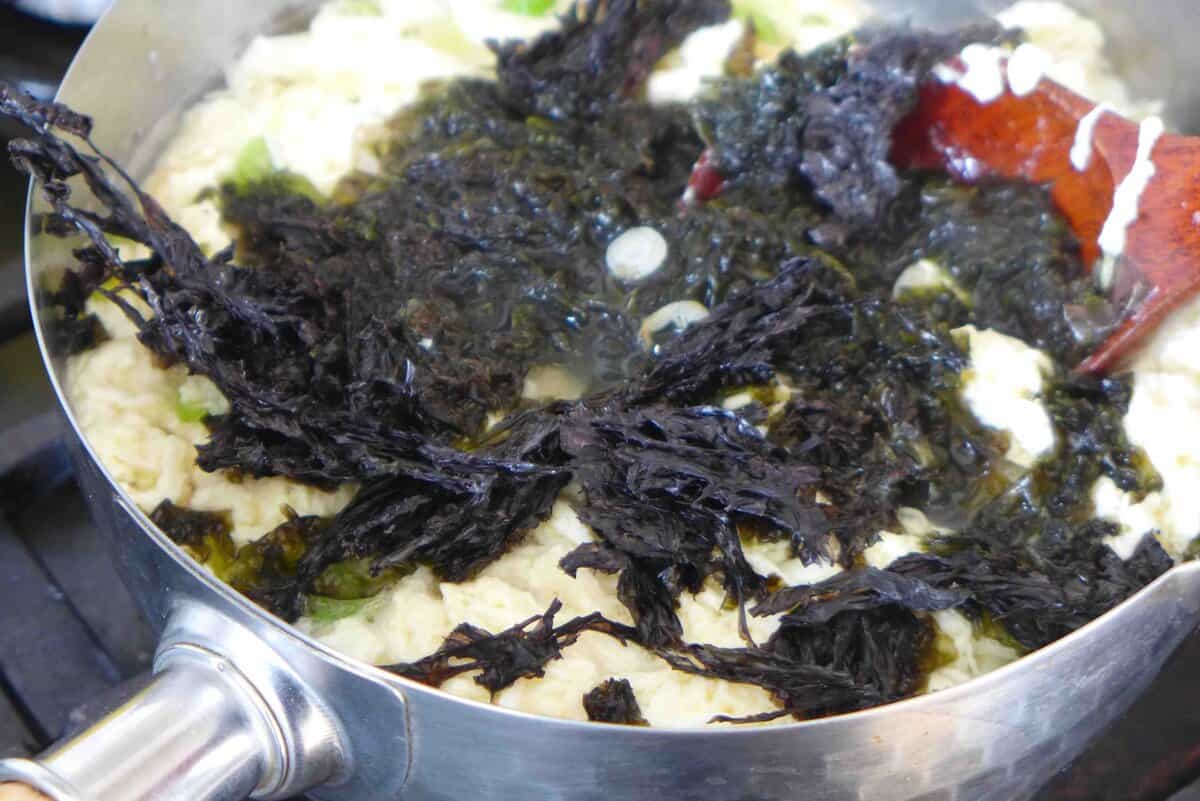
As soon as the egg has set, add the seaweed, torn into small pieces, into the saucepan. Let it simmer for about 30 seconds, then turn off the heat.
🌟 NOTE: Most packaged dried laver seaweed is pre-cleaned and can be used directly. However, if the package recommends cleaning to avoid any dust or gritty bits, give it a quick rinse under cold water, then drain.
Step 4: Season the soup
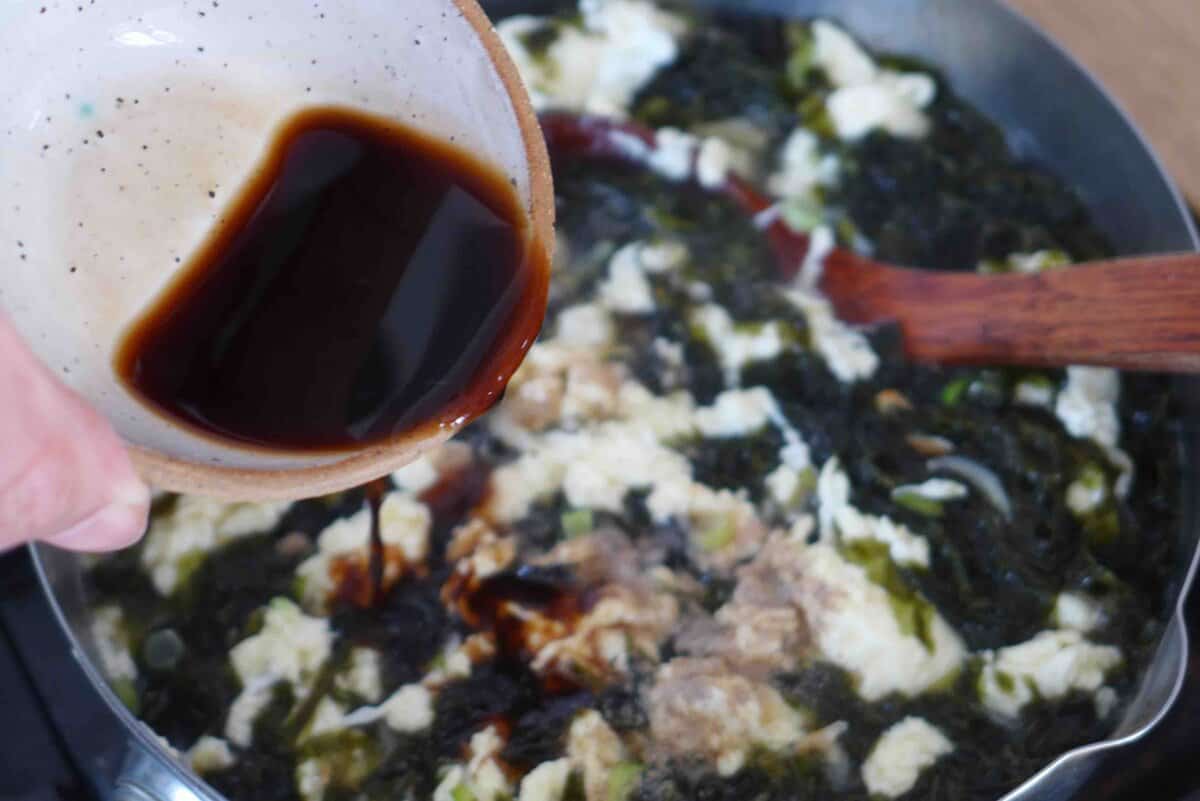
Season the soup with light soy sauce, black rice vinegar, sesame oil, and a little salt and white pepper, adjusting to taste.
Finish by scattering the green parts of the scallions over the top for a vibrant lift. Serve the soup warm, and enjoy!
🌟 NOTE: In Chinese households, this soup typically has a clear, watery broth. However, if you prefer a thicker consistency, you can add a cornstarch slurry (see my recipe for Classic Egg Drop Soup for instructions).
Serve ideas
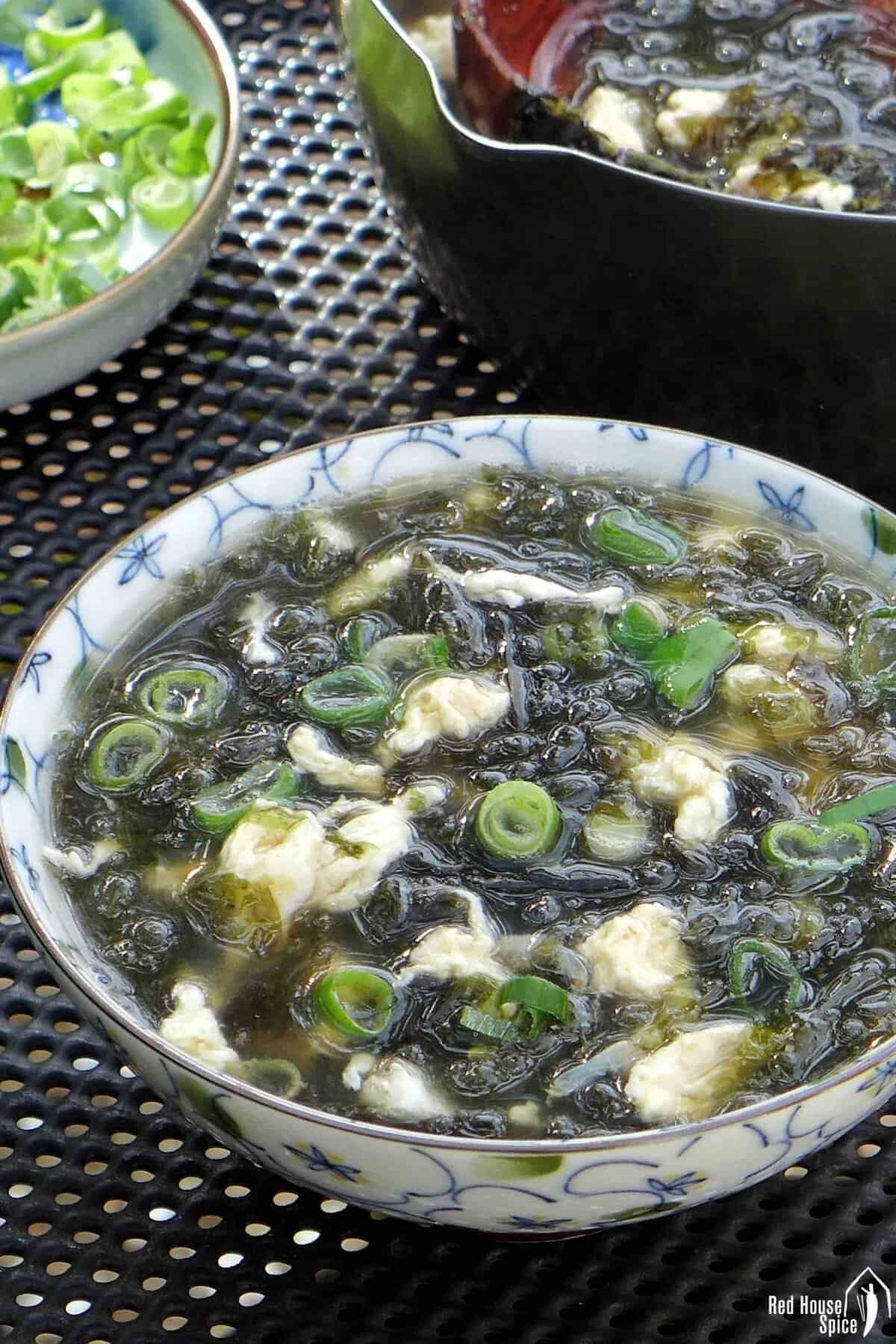
This quick and comforting soup pairs beautifully with many meals, and I could honestly enjoy it any time of the day—whether with Scallion Flower Rolls for breakfast, alongside a quick Beef Chow Fun at lunch, or served at the end of a multi-dish dinner to balance out richer, heavier dishes. It also makes a light, soothing companion to Pan-Fried Dumplings, Steamed Bao, or Chili Oil Wontons.
📋 Recipe card
Love this recipe? Please leave a 🌟🌟🌟🌟🌟 rating and a comment. Thank you!
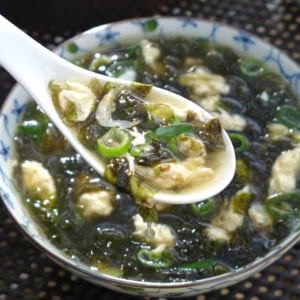
Seaweed Egg Drop Soup (紫菜蛋花汤)
Ingredients
- ¼ oz dried laver seaweed - aka Zi Cai/紫菜 (see note 1)
- 3 eggs
- 1 teaspoon neutral cooking oil
- 2 stalks scallions - finely chopped
- 1 tablespoon papery dried shrimp - or regular dried shrimp (see note 2)
- 1½ tablespoon light soy sauce
- ½ tablespoon black rice vinegar
- 1 teaspoon sesame oil
- ¼ teaspoon salt - or to taste
- ⅛ teaspoon ground white pepper
Instructions
- Heat oil in a saucepan, then add papery dried shrimp and the light green part of the scallions. Sizzle until fragrant.
- Carefully pour in 4 cups (1000ml) of water and bring it to a boil.
- Use one hand to pour in the beaten eggs in a thin stream, while swirling the water in one direction with a spoon held in the other hand.
- Once the egg strands form, add the seaweed, torn into small pieces. Leave to simmer over low heat for 30 seconds.
- Turn off the heat and season the soup with light soy sauce, black rice vinegar, sesame oil, salt, and white pepper.
- Finally, garnish with the remaining scallions and serve warm.
NOTES
NUTRITION
NUTRITION DISCLOSURE: Nutritional information on this website is provided as a courtesy to readers. It should be considered estimates. Please use your own brand nutritional values or your preferred nutrition calculator to double check against our estimates.

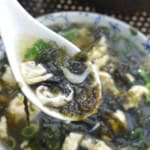
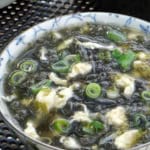
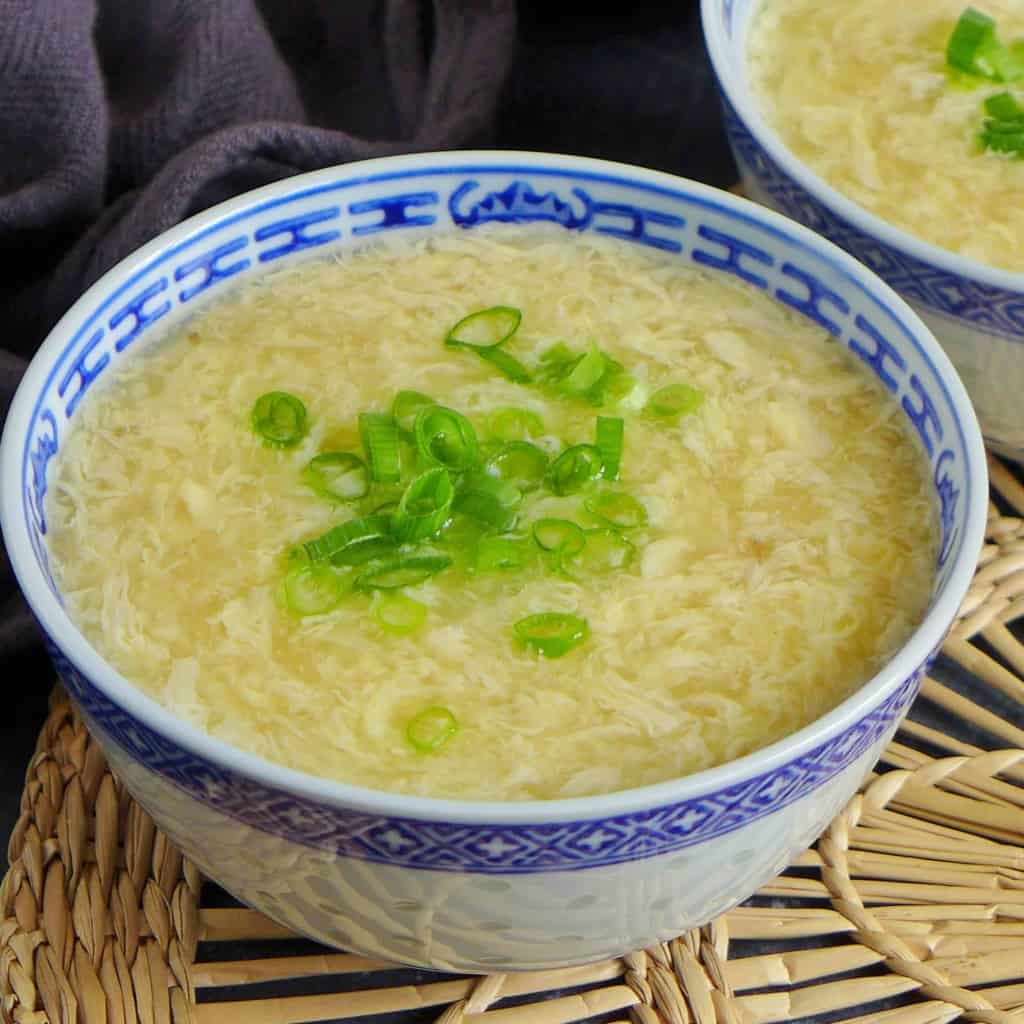
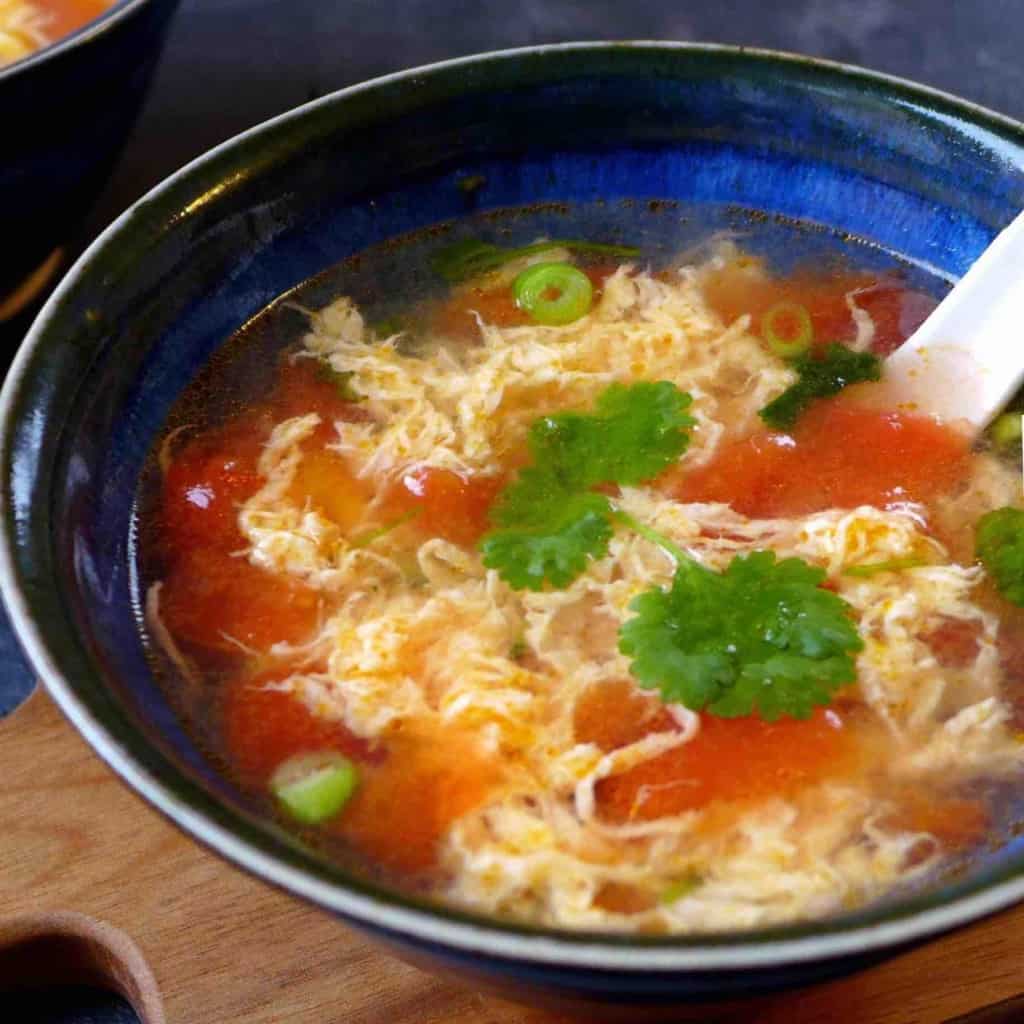
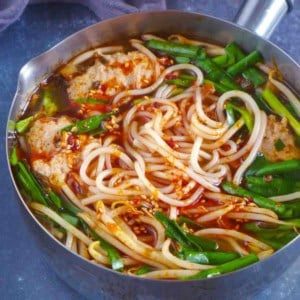
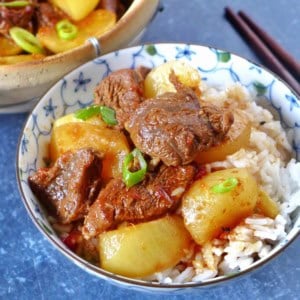
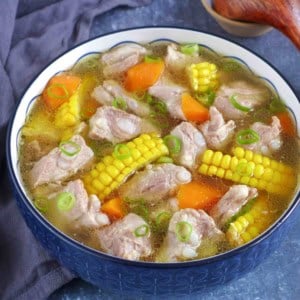

Hello Wei,
I am very interested in this recipe as I love seaweed as food. I do have some Laver here at home but it is in the form of Welsh Laverbread. Nothing to do with bread, just a translation from Welsh to English. Bara (bread, in this case sustenance rather than actual bread) and Lawer (Laver). It is boiled Laver from the Gower Peninsula in South Wales where it is a delicacy. It is not the same species as the one that you use and will probably give a thicker texture.
Very much looking forward to it.
Paul:-)
Thank you for sharing that. It’s fascinating to hear about Welsh Laverbread and its cultural background.